Best MIPS mountain bike helmets: rotational protection makes for the safest helmets
Regardless of what or where you’re riding, these are the best MIPS mountain bike helmets currently available
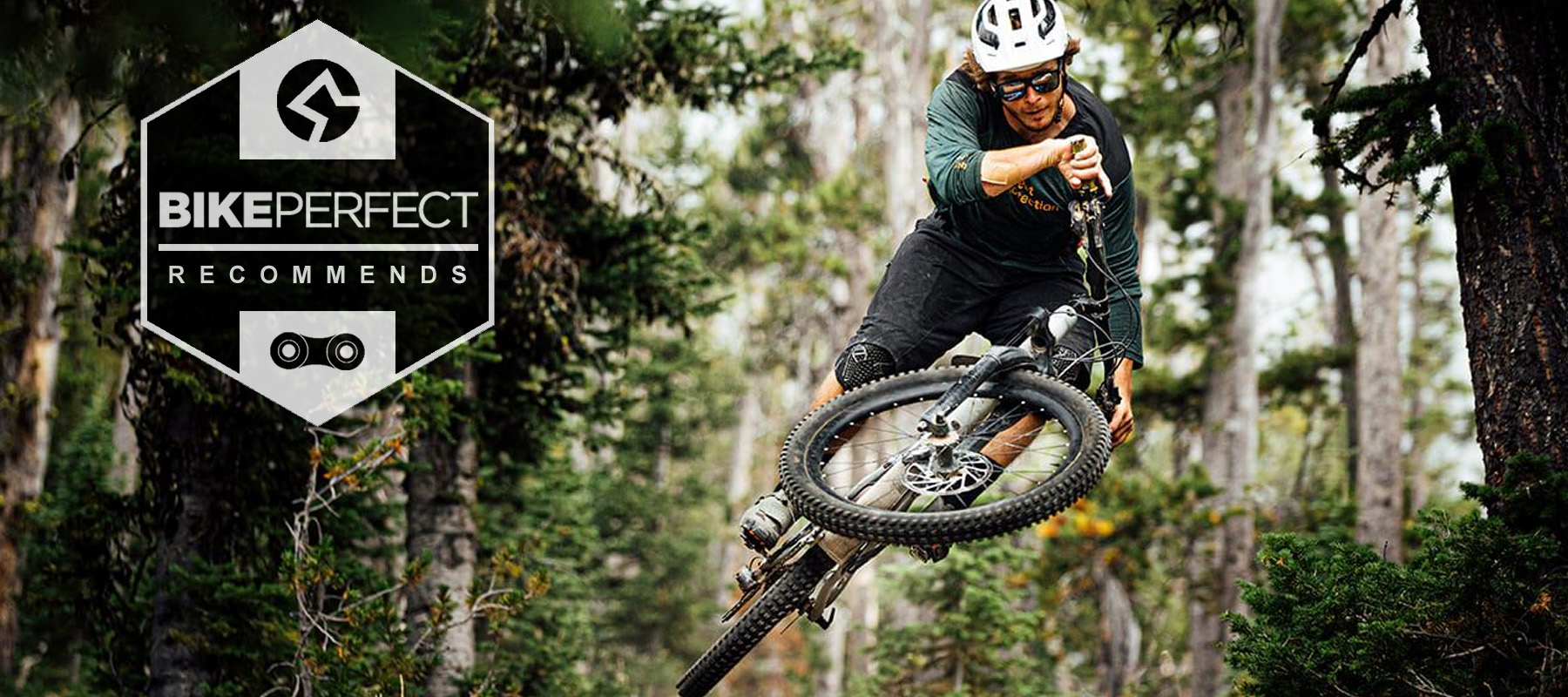
Whatever kind of riding you do, from epic cross-country spins to hardcore trail thrashes and everything in between, staying protected when it goes wrong is vital. The MIPS system damps damaging twisting forces, and as these are a common cause of injury, that means the best MIPS mountain bike helmets are the very safest you can buy.
With so many models on sale the choice can seem baffling, but finding the right one for you is simple. Your style of riding dictates the amount of weight, heat and coverage that's appropriate. Beyond that, you just need a comfortable, secure fit for your skull shape and room for your favored eyewear.
The best half-shell helmets are perfect for the majority of mountain biking, thanks to their balance of protection with good cooling, low weight and convenience. They're easy to hear and speak in too, unlike those with ear or chin protection.
While there are more than 700 models of helmet now featuring it, MIPS is not the only system to address rotational impact forces. Bontrager's WaveCel, POC's Spin, 100%'s Smartshock, Leatt's Turbine or Koroyd all aim to do the same thing - and of course, you can still buy good lids without any of them at all, if cost is your number one priority.
What is MIPS in helmets? It stands for Multi-Directional Impact Protection System, and was created by a neurosurgeon/engineer partnership, rather than a helmet manufacturer. It allows the shell to twist independently of the inner cradle – and your head – and cushion the effects of glancing blows.
Naturally, a helmet is just one part of the puzzle, and not your only vulnerable area on the trails – see our guide to the best mountain biking knee pads and score yourself some valuable extra protection.
For more about MIPS – and all the other tech options to consider – check out our complete guide on how to choose the best MIPS mountain bike helmet at the end of this article.
For information on Bike Perfect's testing procedures and how our scoring system works, see our how we test page.
Best MIPS mountain bike helmets
Why trust BikePerfect
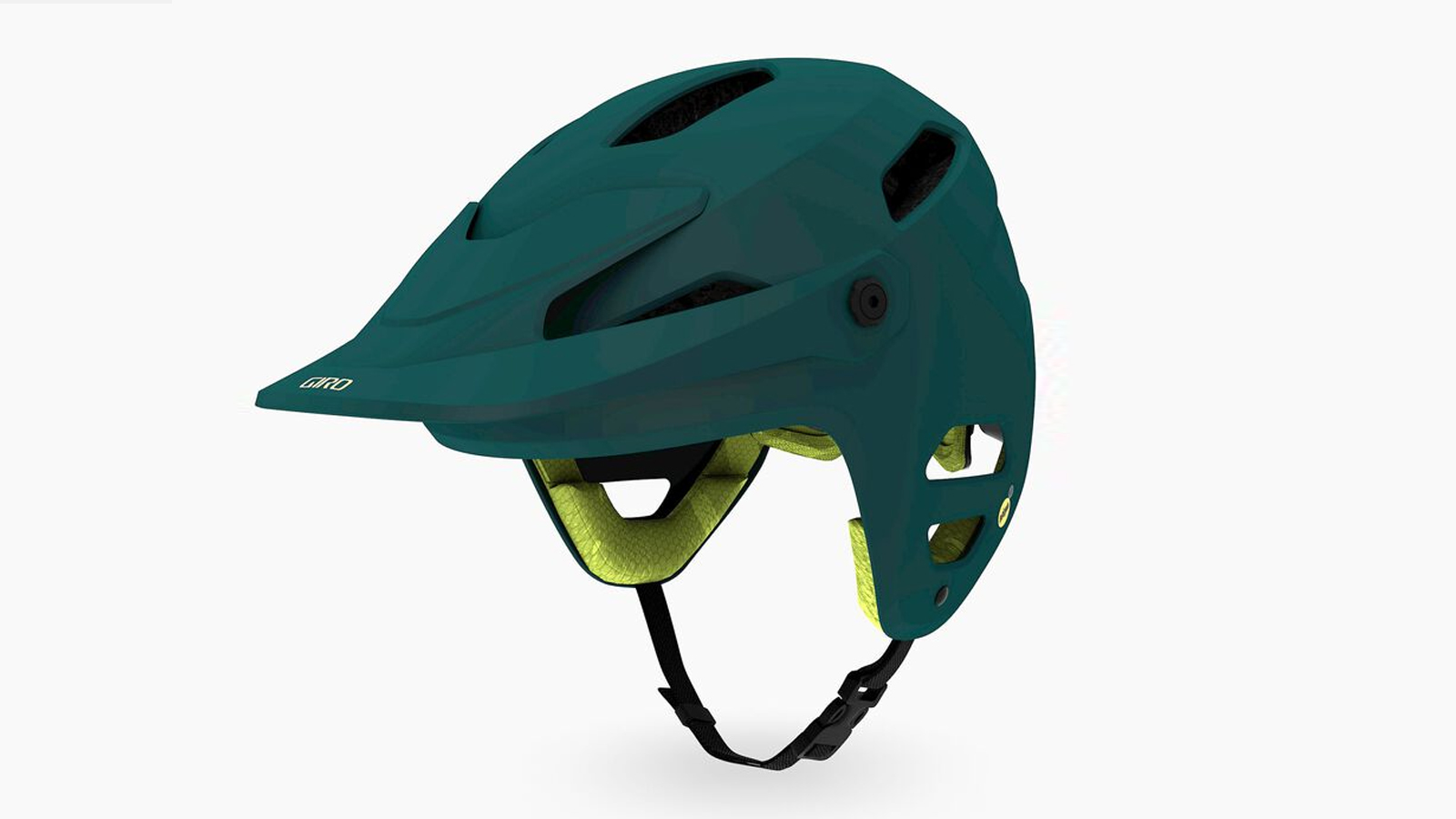
Specifications
Reasons to buy
Reasons to avoid
Yes, the Tyrant also features in our guide to the best enduro helmets, but it’s too good to miss out here. The overall design, construction, fit and looks make it our favorite open-face helmet for aggressive riding.
The trials inspired looks oozes a casual appearance, but the extended coverage provides the confidence to attack the most testing terrain. Despite the low number of vents, it runs surprisingly cool meaning there are no second thoughts about wearing it during long and hot alpine adventures.
To top everything off is a relatively affordable price tag. Other than the occasional creak from the ratchet system and a slight reduction in hearing sensitivity the Tyrant is nearly flawless.
For more info, check out our in-depth Giro Tyrant review.
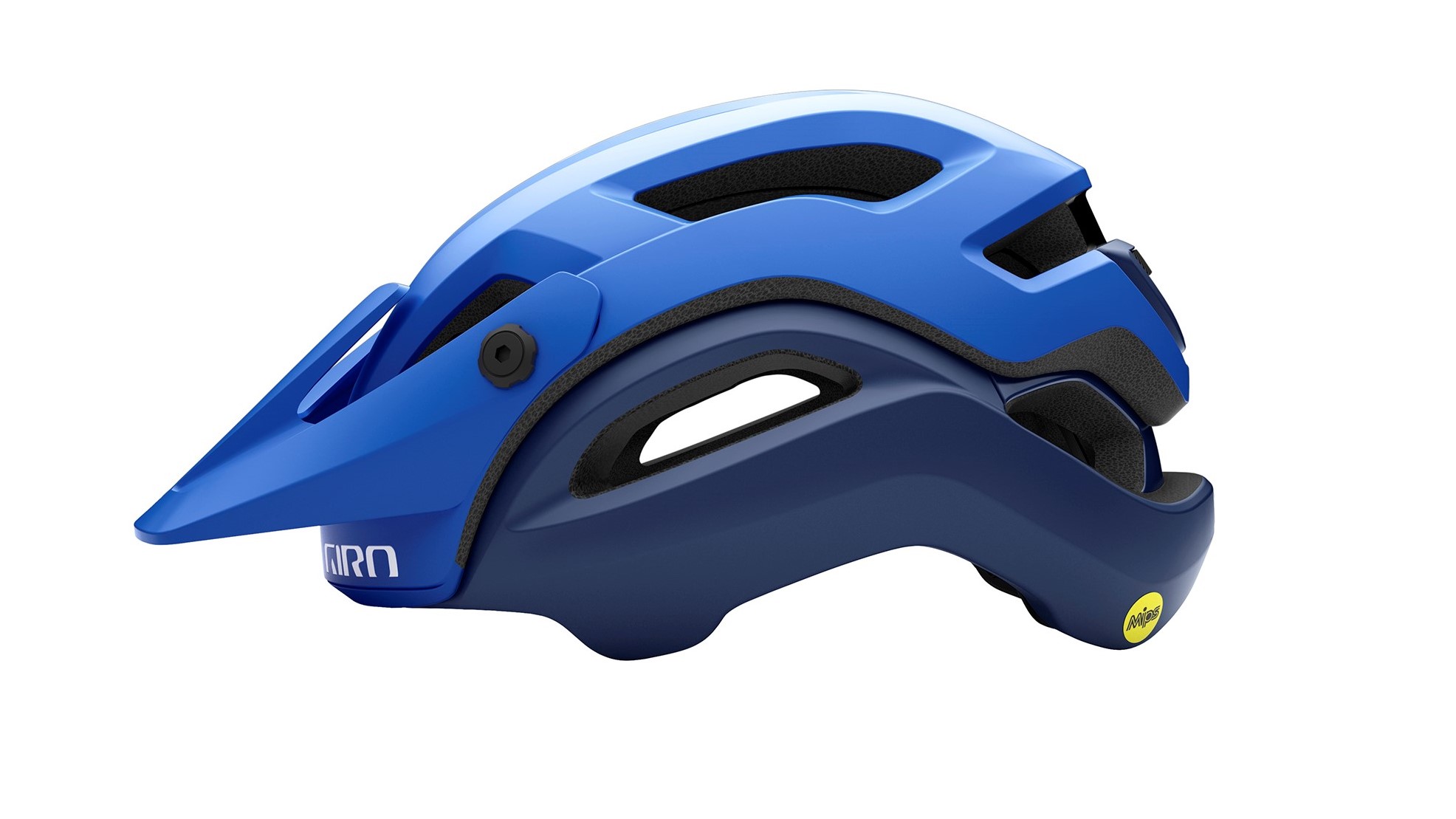
Specifications
Reasons to buy
Reasons to avoid
For the Manifest, Giro has cut no corners – it's one of the most tech-packed and ultimately safest options out there.
The MIPS Spherical system is the slimmest and coolest version so far, and we found the Manifest's ventilation exceptional at any speed. It also gets a proven Roc Loc dial-adjusted cradle, a magnetic FidLock catch and a translucent 'AURA' arch for extra strengthening.
Internal grippers keep glasses secure when both worn or stashed, and if you’re a goggle wearer the rear is grippy and well-shaped for straps. You may be disappointed that the visor doesn’t go high enough to stash them beneath it, though.
For more details on the Giro Manifest, head over to our full review.
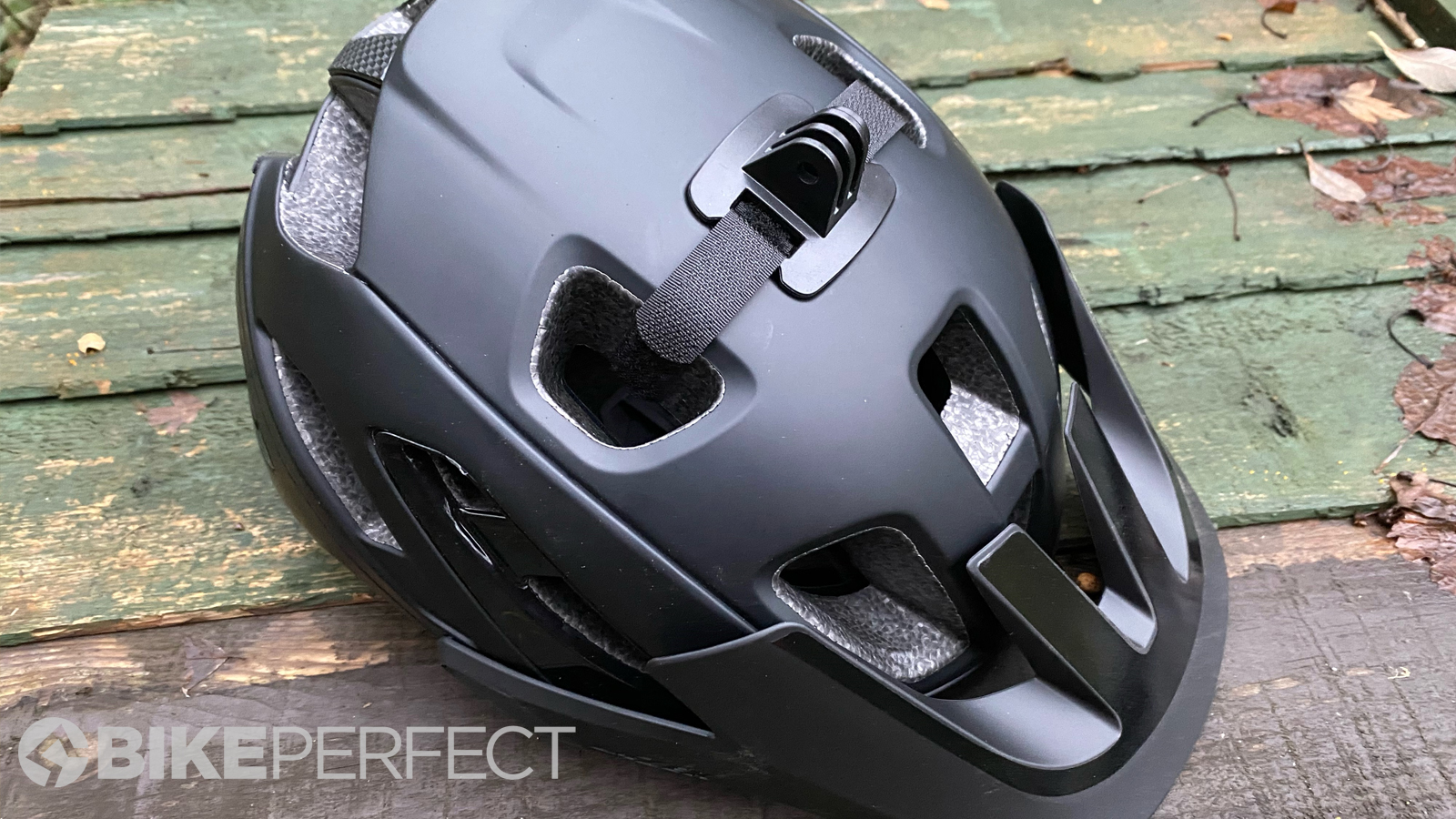
Specifications
Reasons to buy
Reasons to avoid
Lazer is a lesser-known company from Belgium, but it certainly doesn't lag behind the helmet competition. We've found that the Jackal is on par with offerings from bigger brands. That's thanks to some standout features, including excellent ventilation. Compared to other enduro lids, the Jackal has much more evident vents, which make for a cooler riding experience.
The overall coverage area and fit of the helmet work great for trail and enduro riding as well. If you prefer to wear goggles, you'll be happy that this helmet plays nicely with goggles whether you're wearing them or storing them.
Another neat feature is the integrated GoPro mount so you can film and share the best bits of your rides. Plus, to put your mind at ease in case of a crash, there's a 50 percent crash replacement policy that lasts for three years.
For our in-depth verdict of this excellent enduro helmet, head over to our Lazer Jackal review.
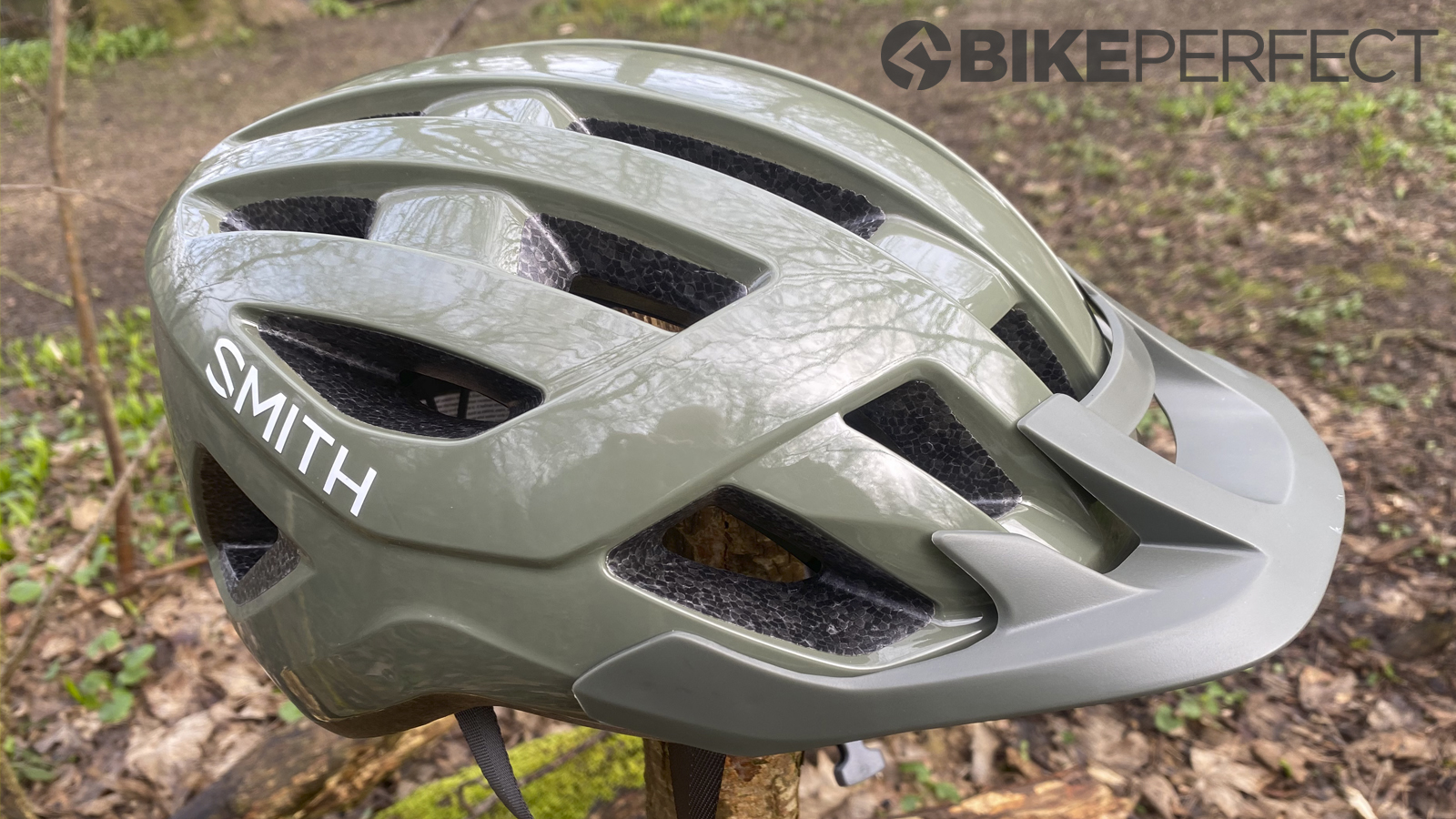
Specifications
Reasons to buy
Reasons to avoid
The Convoy may well be cheap, but it doesn't look or feel it. The only real concessions are the hardshell not extending underneath to protect the lower rim's inner foam, and the fixed-position visor. Neither thing is especially unusual or that hard to live with, though.
We found the fit very secure and comfortable, and it vents pretty well – it's actually better than some of Smith's own far more expensive designs. You even get two different thicknesses of pad for getting it just so.
It's fairly light and, if you ask us, it's a good-looking thing too – not bad considering it costs less than many non-MIPS lids and yet offers more protection.
More on this bargain MIPS helmet, check out our full Smith Convoy review.
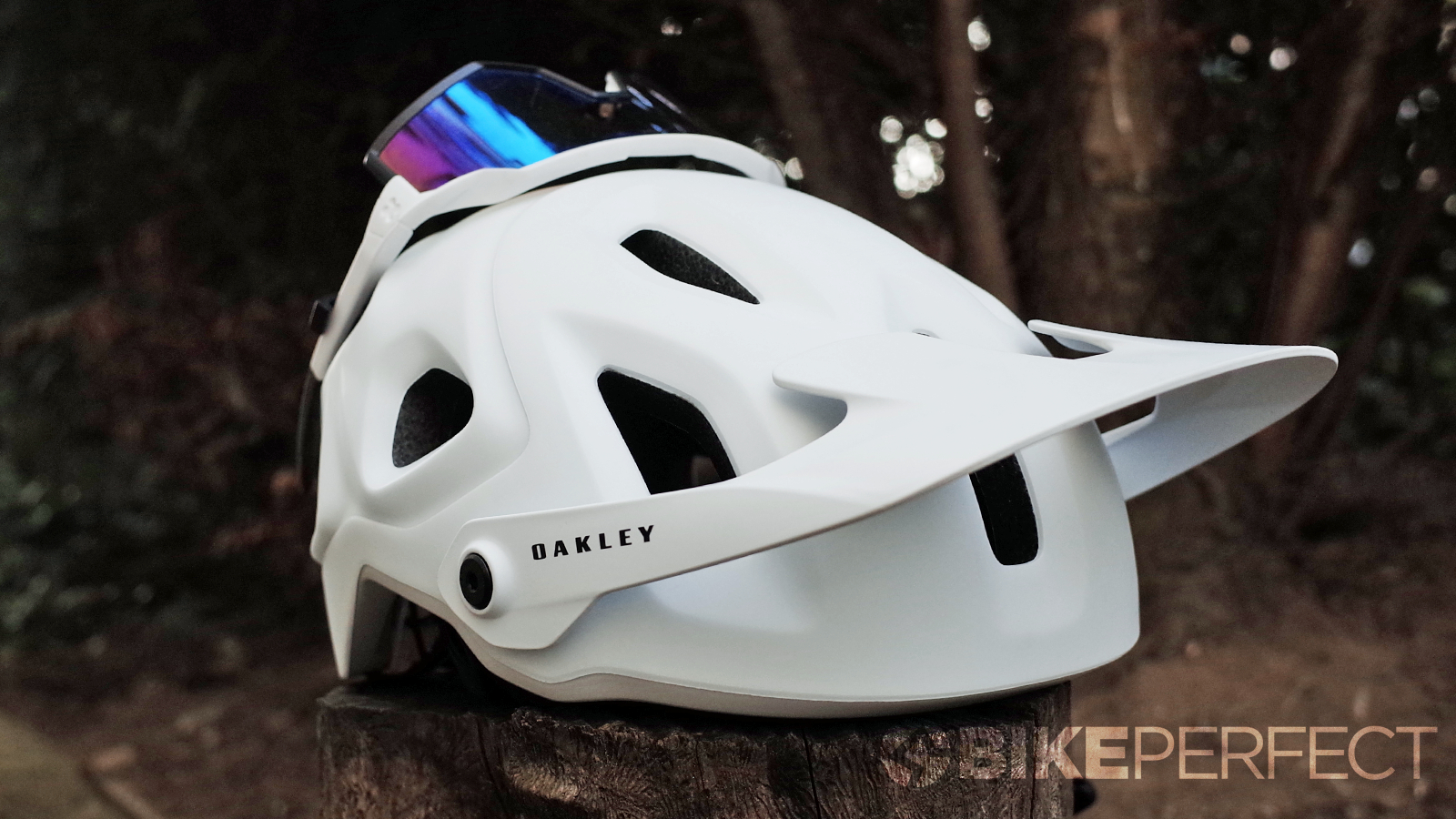
Specifications
Reasons to buy
Reasons to avoid
If you like mountain biking while wearing sunglasses it can be a bit of a nuisance when you want to take them off mid-ride. While gravel, road and XC can usually wedge the arms into the vents, it isn't as straightforward with trail helmets that have a peak.
Oakley took on the challenge and released the DRT5, which has a number of eyewear considerate features. Firstly is the Eyewear Dock at the rear of the helmet which uses two sprung hooks to hold your sunglasses securely by the arms when climbing, riding between trails, or at a cafe stop.
Secondly, the Boa tightened retention system uses a cable to reduce the chances of interference when you are wearing your sunglasses. Overall, we found the DRT5 to play well with all brands of glasses too.
Beyond eyewear orientated features, the DRT5 is really well finished and we found the fit very comfortable too. It is MIPS equipped and the minimal and, and unusual, silicone brow pad is far more comfortable than it might appear. It is on the heavy side and it's a bit pricey too, although we frequently see it on sale. So if you can get a good discount, it's well worth considering.
Check out our full review of the Oakley DRT5 for more details.
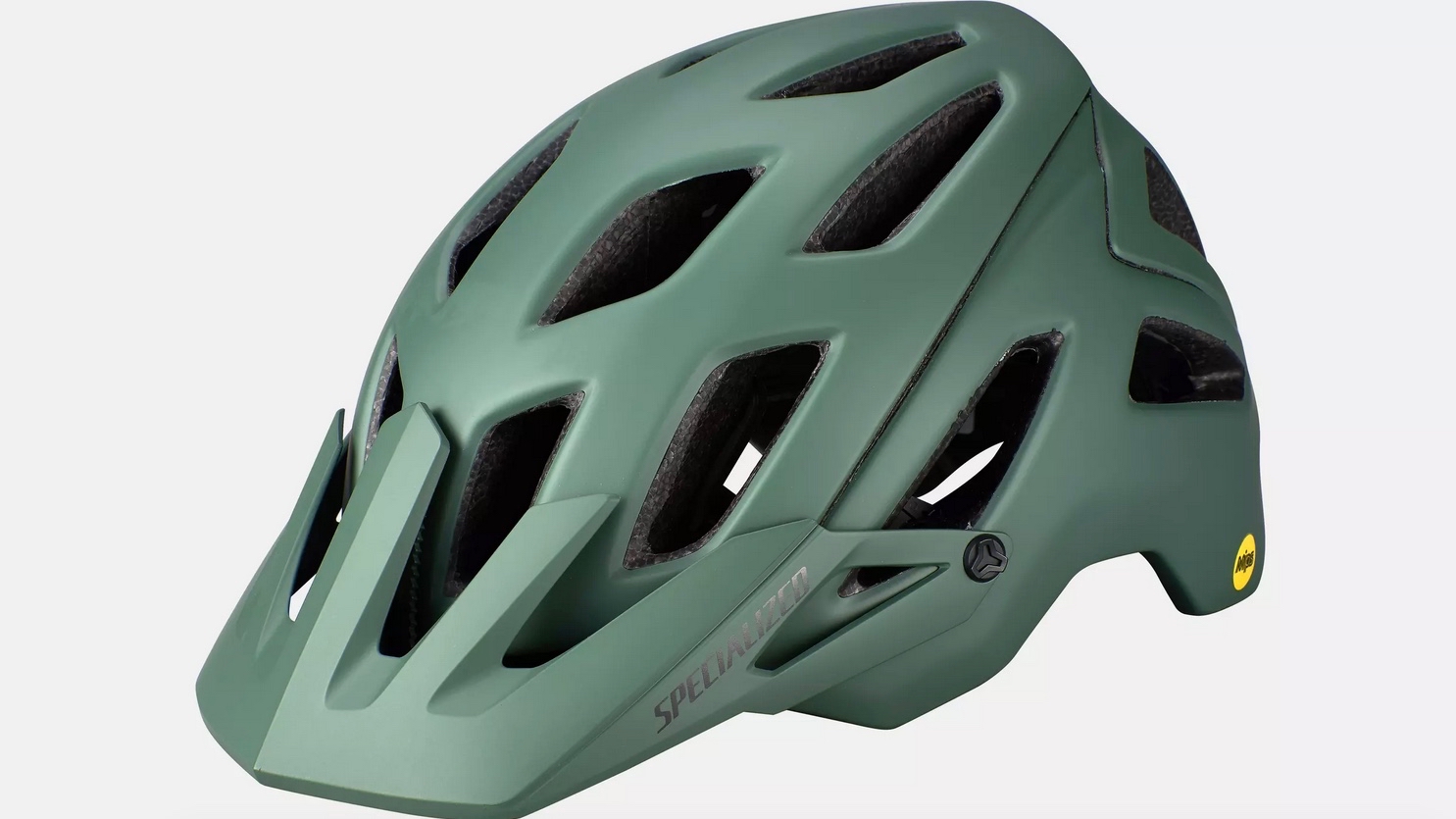
Specifications
Reasons to buy
Reasons to avoid
The Ambush packs technology that’s seriously appealing and potentially lifesaving if you frequently ride solo. The ANGi sensor in the back measures forces and knows if you've crashed hard, and will then – via the Specialized Ride app – send a distress message to your chosen contact. You get a countdown time to cancel it before it goes if you're actually okay.
Specialized has worked with MIPS to create its own dedicated version, MIPS SL. This effectively blends MIPS into the helmet padding itself, which we found results in an impressively light and well-vented lid.
Coverage is deep, the visor works well with stored goggles and the rear is shaped well to keep goggle straps secure. On the downside, there's no height adjustment for either the strap Y-pieces or the cradle itself, and the shell sizes up very large – if it fits you and you ride alone, though, it's absolutely worth a look.
For more on the Specialized Ambush helmet, read our full review.
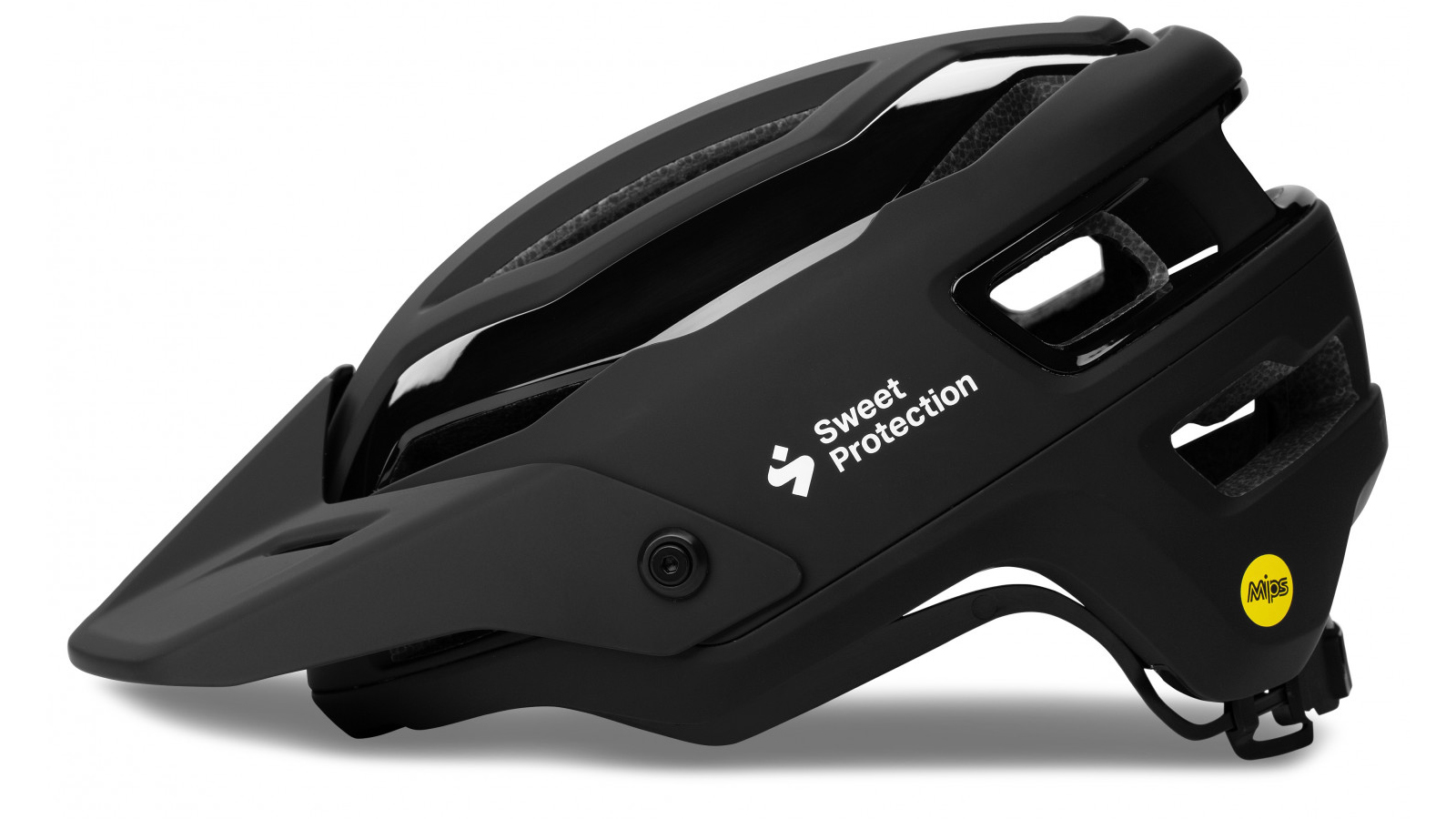
Specifications
Reasons to buy
Reasons to avoid
The Trailblazer utilizes a multi-piece shell construction, which uses four different strategically placed panels that are all designed to deal with different types of impacts on specific areas of the helmet.
There’s no arguing it doesn’t look killer either, plus it’s got a fully dialed fit to match. The Trailblazer sits low making the helmet feel well balanced, and the ample amount of shell coverage instills the confidence to ramp it up to 11 on gnarly terrain.
Keeping things cool is Sweet’s legendary STACC venting. To the eye, these small intakes don’t look like much, but the way the air is drawn in and channeled across the temples before exiting out the oversized exhausted vents feels really effective across all trail speeds. As a result, it’s become one of our go-to options for nearly all trail duties.
There is a cheaper non-MIPS option available, however, given the protection levels on offer for a slight price increase, we’d bag this one every time.
Check out our full Sweet Protection Trailblazer review.
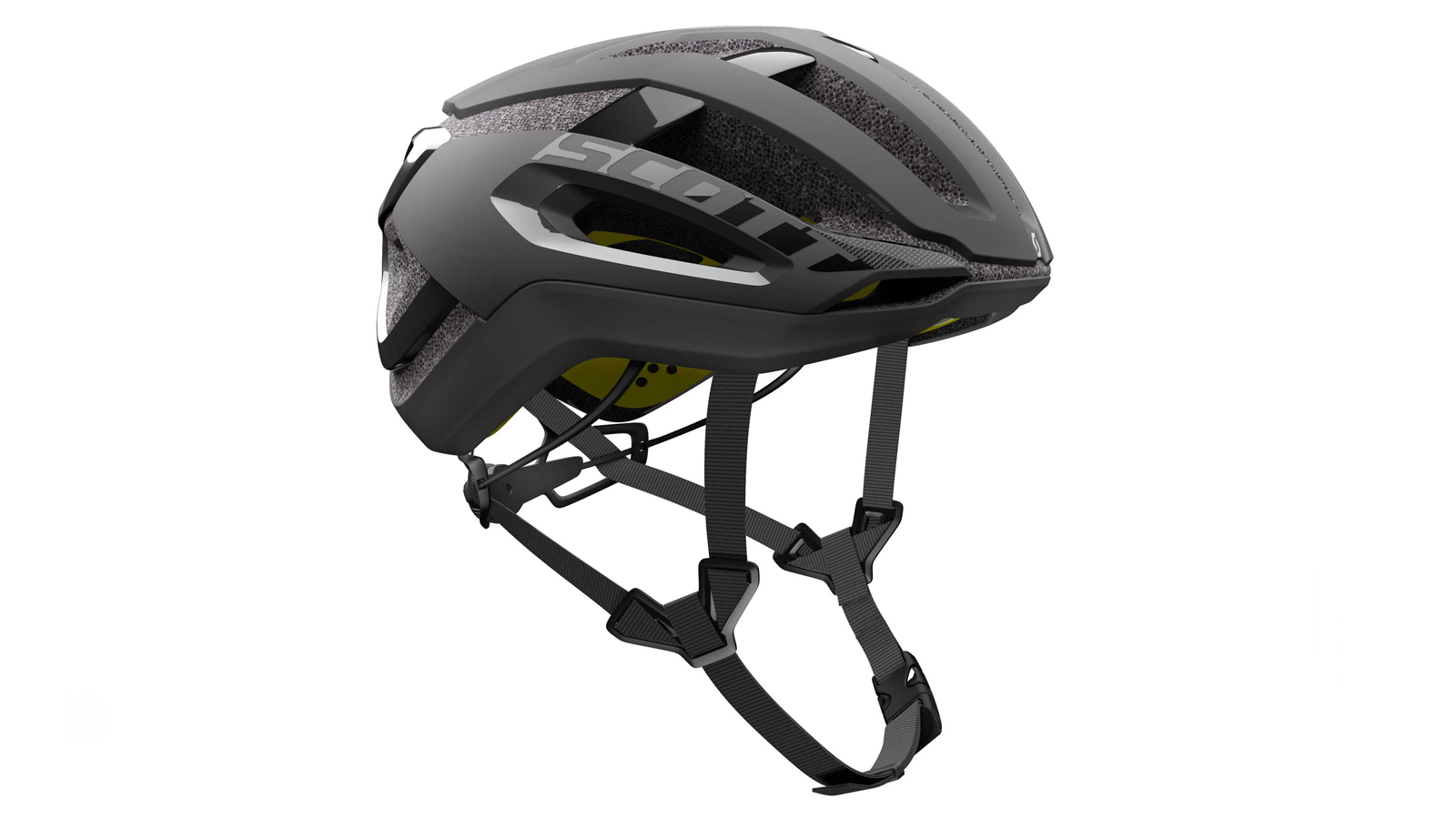
Specifications
Reasons to buy
Reasons to avoid
Most of the items on this list are meant for trail or enduro riding, but there are some great cross-country helmets that use MIPS technology too, incuding the Scott Centric Plus. The helmet is used by top XC racers on the Scott-SRAM team and is regarded as one of the best XC helmets.
The design is optimized for aerodynamics so riders can go faster when it matters the most. To reduce weight, a foam liner is fused to the polycarbonate outer shell of the helmet. That's combined with MIPS to create a safe helmet that is light on the neck.
Plus, vents allow airflow to channel over the head in order to keep riders cool.
If you're looking for a great XC and gravel helmet, read our Scott Centric Plus review for more details.
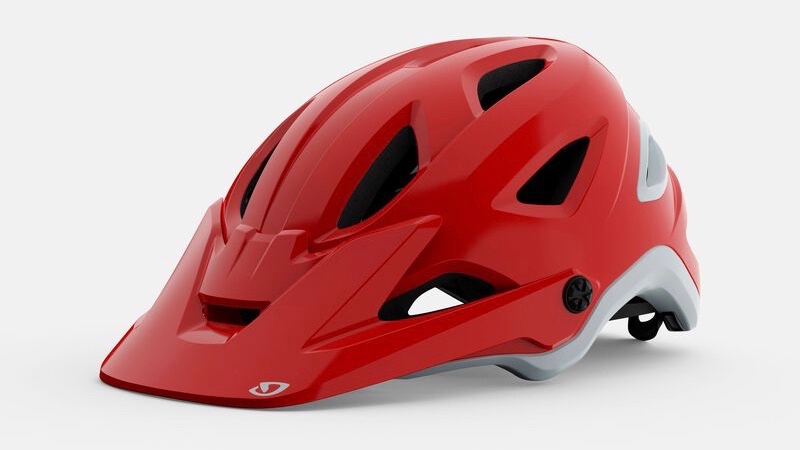
Giro Montaro MIPS
Specifications
Reasons to buy
Reasons to avoid
The Montaro takes the basics you want from a trail riding helmet and nails them all. It's comfortable, cools well, looks sharp and can take the day-to-day wear and tear well.
Obviously protection levels are considerable, with the in-molded construction fusing the foam and outer shell in the strongest way, the 'Roll Cage' internal skeleton stopping the helmet cracking apart under impact and the vulnerable lower edge of the foam completely skinned over with hard shell.
The three-position visor allows easy goggle parking and grippers at the rear hold their straps, and the entire thing screams quality. It's really nicely made and just gets on with doing the job well.

MET Echo MIPS
Specifications
Reasons to buy
Reasons to avoid
MIPS-equipped helmets don’t have to come with top-dollar pricing, and MET also showcases this brain-saving technology at an affordable price.
The Echo shares a similar construction to MET’s more premium lids, including increased overall shell coverage. An in-mold outer shell lines the shock-absorbing polystyrene inner shell, all of which is adjustable via a size tailoring cradle. The high comfort pads are removable for washing, so the echo is guaranteed to stay fresh for countless sessions.
If we had to be critical it’s not the coolest option available, but the overall design and killer price make for a wicked gateway to MIPS technology.
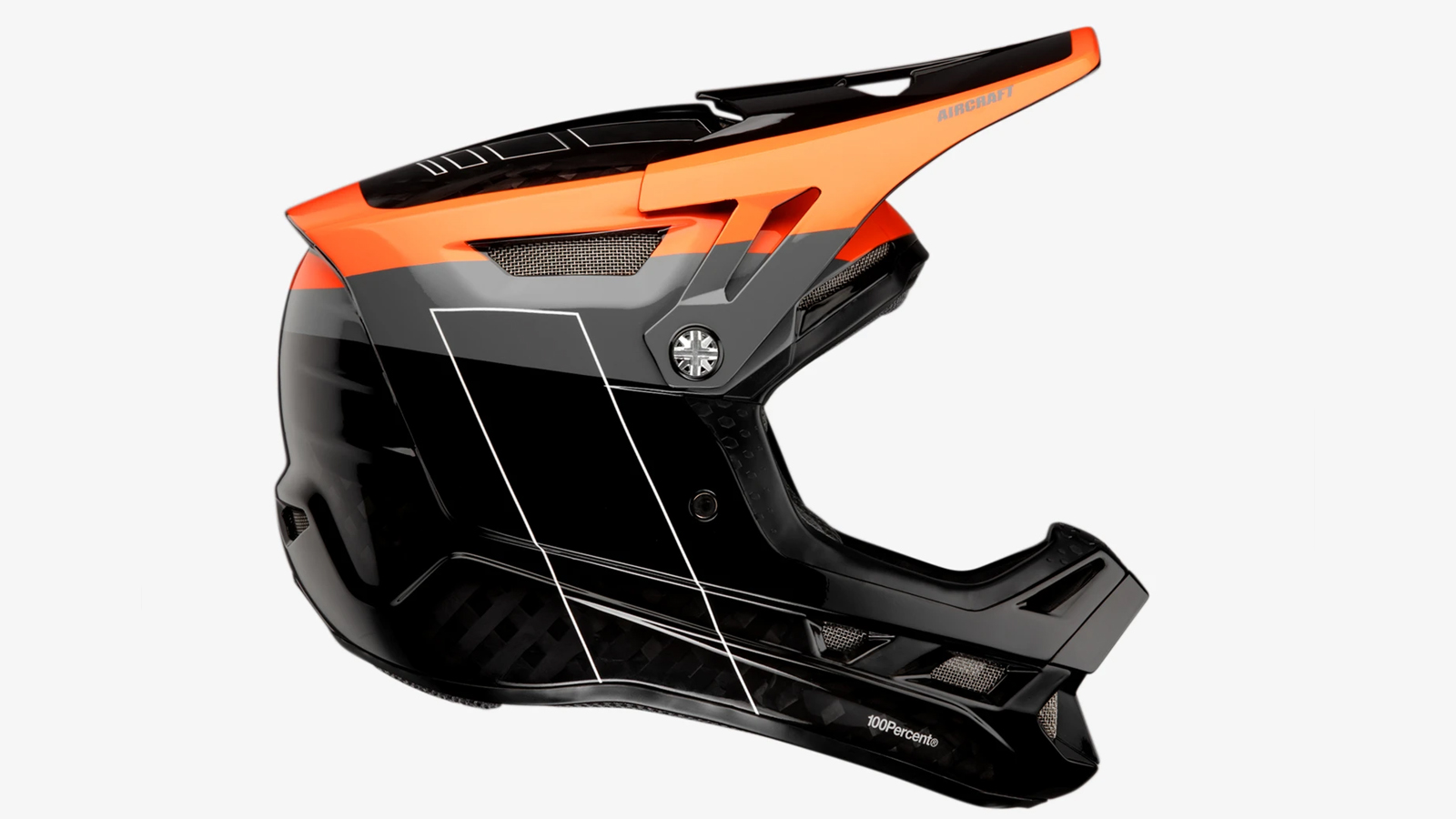
100% Aircraft Carbon MIPS
Specifications
Reasons to buy
Reasons to avoid
With its roots firmly grounded in motocross, 100% sure know how to make a helmet look good. Five color options, ranging from stealthy black to loud orange, mean there's an Aircraft for you regardless of taste. Thanks to an array of included internal pad options, the fit can be bespoke to the individual rider too.
The Aircraft Carbon’s shell uses an aerospace-inspired carbon and kevlar construction, so impact protection strength is high while overall weight is impressively low. With 25 vents generously positioned around the helmet, it remains cool, too. This low weight and breezy design make it a pleasure to wear both on the racetrack or deep in a backcountry epic.
Other neat features include a titanium D ring closure, a highly adjustable visor, along with emergency release cheek pads that can be safely and swiftly removed during the post-crash treatment. The Aircraft carbon is also compatible with nearly all neck braces.
How to choose the best MIPS mountain bike helmet
How does MIPS make helmets safer?
MIPS (Multi-directional Impact Protection System) is a specially designed helmet liner that is engineered to reduce harmful forces transmitted to the brain during a crash, which in turn reduces the chances of brain injuries such as concussion. It works by the helmet having an inner layer that allows the head to independently move 10-15mm from the helmet. Think of a ball and socket, where the ball can move independently inside the socket shell.
In the event of a crash, this design adds protection against rotational motion impacts and can divert energy that would usually be transferred to the brain, and data shows big improvements over a non-MIPS equipped alternative.
MIPS helmets are usually a little more expensive than a non-MIPS lid, but given the benefits, we almost see it as essential when purchasing a helmet these days.
How does a MIPS helmet work?
The best mountain biking helmets use an EPS liner which is often made up of multiple foam densities in order to tune different sections of the helmet for the most common impacts. Due to how well EPS foam absorbs impacts, it’s the best material for protecting your precious head should the worst happen.
Above the EPS foam is the helmet's outer shell which is the first point of contact in a collision. This means it plays an integral part in both preventing damage to the EPS foam and dealing with the initial impact. The shell can also be made up of separate sections which again means different areas of the helmet can be tailored to better suit different types of impacts.
What makes a helmet a MIPS helmet is the integration of its rotational impact protection design into the construction. It can usually be found beneath the helmet pads and is often recognizable by its bright yellow design.
How should a bike helmet fit?
Arguably, fit is the most important element to get right when choosing a new lid, and having a helmet that fits correctly is essential in ensuring it will effectively protect your head in the event of a crash. Even a helmet packing all of the latest and safest helmet technology, if poorly fitting, will hugely reduce its chances of providing the required levels of protection. MIPS helmets can fit slightly differently so if you’re unsure about what brand or size will best fit your head shape, we always recommend heading to your local bike shop to try before you buy.
Is the amount of head coverage a helmet provides important?
Helmets are available in a huge range of cuts and shapes, all of which tend to suit one style of mountain biking better than another. Cross-country helmets tend to be slimmer and more aerodynamic as XC trails tend to be less perilous, whereas trail and enduro helmets have a deeper fit and drop down further at the rear and sides to provide more coverage and head protection given the increased likelihood of crashing.
How much ventilation does a helmet need?
The amount of venting a helmet has is often decided by its intended use. XC and endurance lids that are designed to be worn for long durations or during high-intensity efforts, tend to have more venting to help prevent the rider from overheating. While the best enduro and DH helmets usually prioritize shell coverage over venting.
When should I replace a helmet?
Helmets are good for one crash and one crash only. Even if you cannot see any damage, if your helmet has experienced some form of impact it’s time to purchase a replacement – it’s simply not worth the risk. Some brands even offer a crash replacement program that allows you to get a new helmet at a reduced rate, something that’s worth looking into if you’re accident-prone.
Which helmet chin-strap fasteners are best?
The traditional buckle design is pretty unbeatable, however, we’re beginning to see the introduction of magnetic closures which bring a new level of ease to fastening your lid. Full-face helmets may still use a simple D-ring closure, these are secure but make putting the helmet on and off and adjustment much more fiddly.
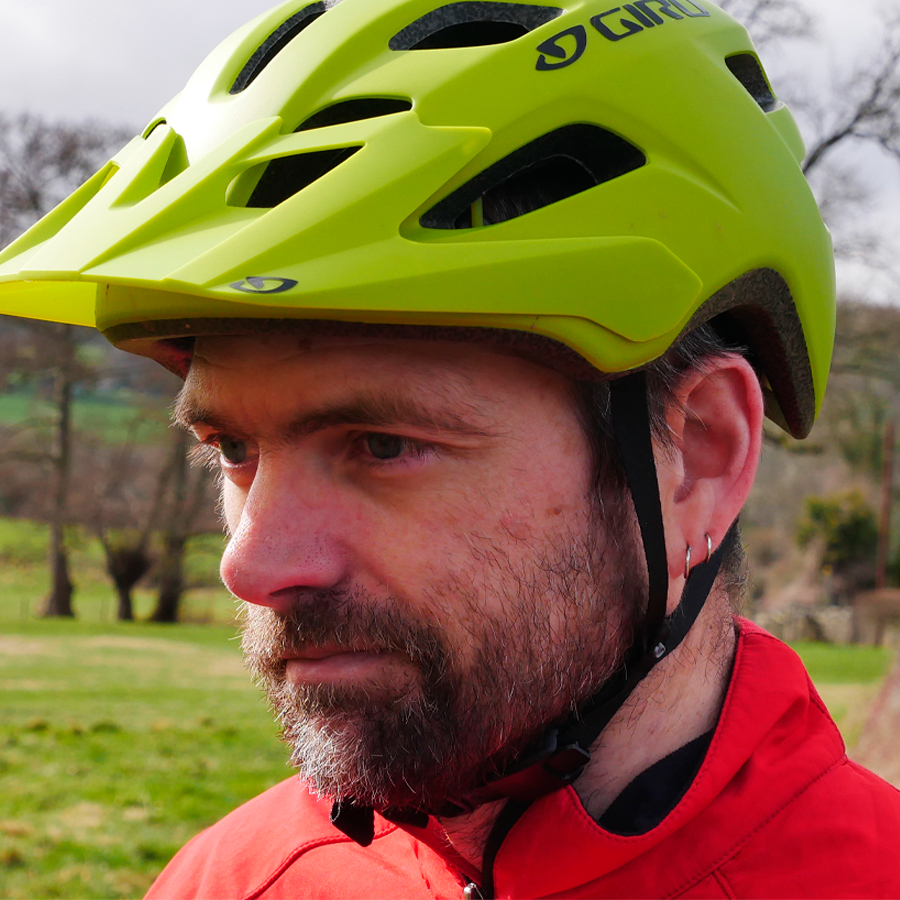
Steve is a highly experienced journalist and rider who's been involved with bikes of all kinds for more years than he would care to remember. Based in South Wales, he has mile upon mile of swooping singletrack, an array of plummet and winch descents and everything in between right on his doorstep.
